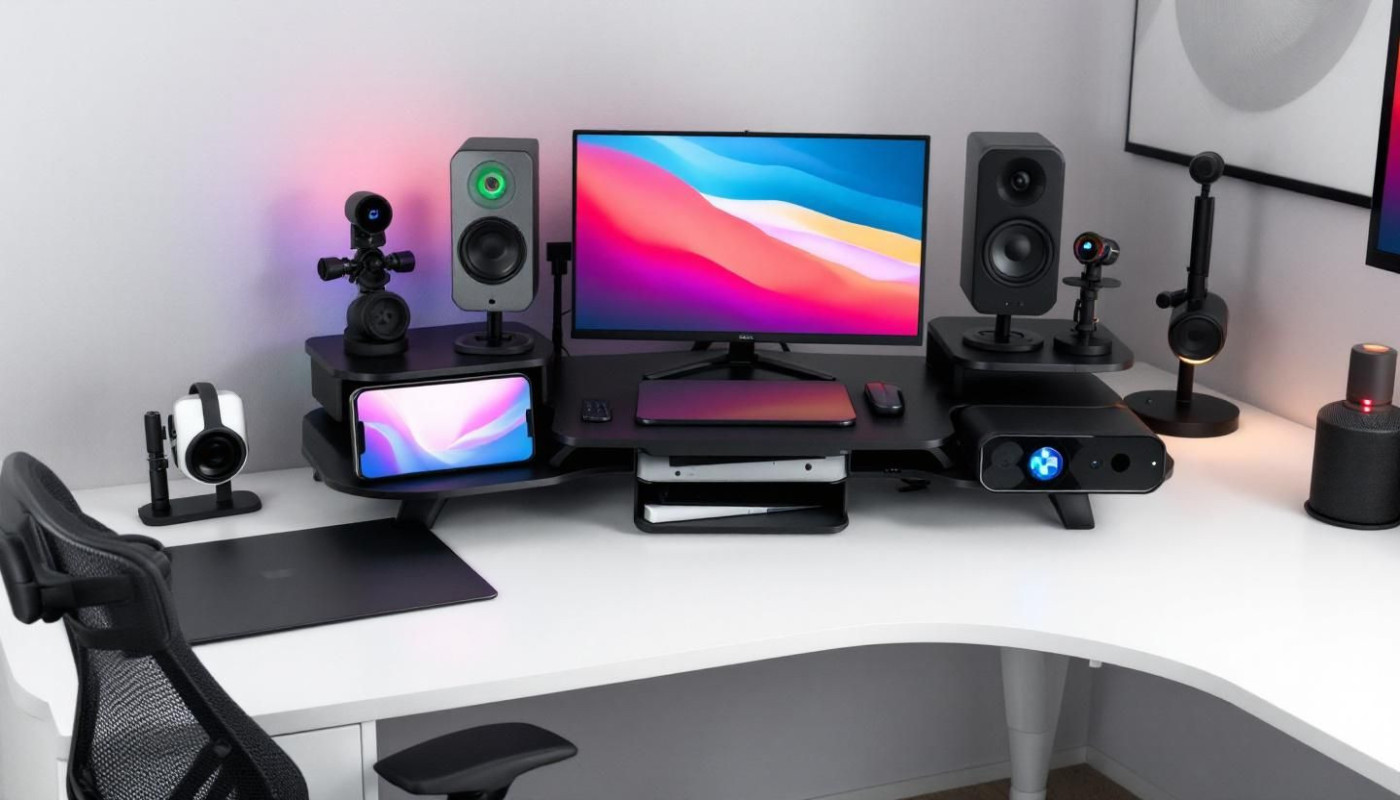Table of contents
Imagine a workspace where calls never drop, video conferences flow without interruption, and mobile devices function at peak performance. The secret to unlocking this level of efficiency often lies in a simple yet often overlooked solution: selecting the perfect mobile booster for office environments. Dive into the following paragraphs to uncover how the right choice can transform everyday productivity and create a seamless communication experience for every team member.
Understanding signal interference in office settings
Modern office environments frequently contend with multiple sources of mobile signal interference that can disrupt seamless connectivity. Reinforced concrete walls, often used for structural stability, have a dense composition that significantly attenuates radio frequency signals, leading to weaker reception within interior spaces. Energy-efficient windows, designed to improve insulation, often incorporate metal oxide coatings that reflect and absorb signals across various frequency bands, further diminishing mobile phone performance. Additionally, the proliferation of electronic equipment—from desktop computers to wireless routers—introduces electromagnetic noise that competes with and degrades cellular transmissions. These physical and technical barriers combine to create a complex landscape where mobile signals are weakened or blocked entirely before reaching users’ devices.
Such signal attenuation directly affects employees’ ability to make calls, access cloud-based tools, or participate in video conferences, all of which are integral to workplace productivity. Poor signal quality can result in dropped calls, slow data speeds, and unreliable connections, triggering frustration and lost work time. Understanding the technical aspects, for instance the role of dBi antenna gain in amplifying weak signals or the impact of specific frequency bands on indoor penetration, is essential when addressing these challenges. By identifying the root causes of interference, organizations can make informed decisions about network optimization and the selection of mobile signal boosters, ensuring consistent connectivity that supports agile and efficient work habits.
Assessing office needs before choosing a mobile booster
Selecting an optimal mobile booster begins with a thorough evaluation of the office environment, a stage often overlooked yet directly impacting signal performance and user satisfaction. Begin by determining the square footage to be covered, as larger offices may require more powerful units or multiple booster systems to extend signal reach throughout the workspace. Factor in the number of users who rely on their phones for communication or data, since high-density environments can demand boosters with higher capacity to prevent network congestion. The office’s floor plan also plays a significant role; open layouts may support signal propagation more easily, while multiple walls, elevators, or metal structures introduce barriers that necessitate a more robust solution.
An honest assessment of the current carrier network infrastructure is indispensable, as the strength and consistency of the incoming outdoor signal strongly influence the type of booster needed. Rural offices with weak external signals may need devices with superior uplink power to communicate effectively with distant towers, while urban locations dealing with complex interference patterns require units capable of handling fluctuating downlink strength. Creating a cellular coverage map of the premises — using professional tools or mobile apps — enables precise identification of weak spots and areas where intervention is most needed, guiding the placement of antennas and boosters for optimal results.
The technical specifications of boosters and antennas should align with the office’s unique layout and usage patterns. Omni-directional antennas capture signals from all directions and are suitable when the office is surrounded by multiple towers or inconsistent signal sources, whereas directional antennas focus on a specific cell tower to amplify signal strength in targeted areas, ideal for locations near a known transmitter. Understanding the balance between uplink (device to tower) and downlink (tower to device) power ensures that both outgoing and incoming communications remain strong, supporting seamless calls and data transfers without interruptions.
No two workplaces are identical, making a tailored assessment not just useful but necessary for achieving peak performance from a mobile booster system. When working with a provider such as UCtel, organizations can benefit from professional guidance that ensures any persistent dead zones are eradicated and every corner of the office enjoys a stable, reliable signal. Taking the time to accurately assess needs before making a purchase can transform workplace connectivity, foster collaboration, and minimize the frustration that comes with spotty coverage or dropped calls.
Key features to look for in a mobile booster for office
Selecting a high-performing mobile booster for an office calls for attention to several advanced technical aspects. Automatic gain control, for instance, ensures that signal amplification automatically adjusts to fluctuating signal levels, reducing the risk of distortion and maintaining call clarity even during peak usage. Multi-band support allows devices to handle different frequency bands used by major networks, so employees on various carriers can benefit from consistent connectivity across the office. A high signal-to-noise ratio translates to cleaner, clearer communications, which is vital for businesses that rely on video conferencing or cloud-based collaboration tools. Compatibility with modern mobile standards like 4G, 5G, and VoLTE not only future-proofs the investment but also supports high-speed data transfer and advanced voice services, crucial for maximizing operational efficiency.
Convenience and reliability are further enhanced by features such as remote monitoring and fail-safe alarms. Remote monitoring capabilities allow IT administrators to oversee the booster’s performance in real-time and address potential issues before they escalate, which is particularly useful in large or distributed office environments. Fail-safe alarms immediately notify staff of malfunctions or interference, minimizing downtime and ensuring uninterrupted service. Seamless integration with existing IT infrastructure, such as unified communications platforms, reduces installation complexity and enables faster scaling as the business grows. Collectively, these features contribute to a more stable and robust mobile experience, increasing user satisfaction by reducing dropped calls and sluggish data, while also minimizing ongoing maintenance demands for office IT teams.
Productivity gains from seamless mobile connectivity
Reliable mobile connectivity brings measurable improvements to office operations through advancements in call quality, data throughput, low latency, and smooth handover performance between network towers. High call quality eliminates misunderstandings during voice calls, which is vital for project coordination and rapid troubleshooting. Enhanced data throughput maintains swift access to cloud-based applications, large file transfers, and collaborative platforms, ensuring that team members work efficiently without interruptions or wasted time. Consistently low latency further enables real-time communication, which is especially beneficial for video conferencing and instant messaging tools that form the backbone of modern business interactions.
Seamless mobile coverage directly translates into faster decision-making and better client engagement. Consider scenarios where sales professionals depend on stable mobile signals to present proposals during virtual meetings, or customer service representatives need instant access to client databases while handling inquiries over the phone. Uninterrupted connectivity empowers employees to respond promptly, address issues as they arise, and resolve client requests without delay. For businesses working with distributed teams or remote partners, the ability to maintain continuous, high-quality mobile connections often determines the speed and quality of collaborative efforts, supporting agile business practices and faster project turnarounds.
Beyond technical advantages, robust mobile connectivity positively influences workplace morale and overall satisfaction. Employees who experience frequent dropped calls or buffering during video conferences may feel frustrated and less motivated to engage with colleagues or clients. By contrast, a well-implemented mobile booster system minimizes such disruptions, fostering a professional environment where staff can focus fully on their tasks. This results in greater confidence in day-to-day communications, fewer workflow bottlenecks, and a stronger sense of teamwork. Common office activities that benefit from solid mobile signals include remote troubleshooting, accessing enterprise resource planning systems, engaging with mobile CRM apps, and collaborating via secure messaging platforms, all of which contribute to a more productive office environment.
Ensuring proper installation and ongoing optimization
Selecting an appropriate mobile booster is only the first phase; ensuring optimal performance demands meticulous installation and continuous optimization. Start with a comprehensive site survey to map out coverage areas, identify weak signal zones, and measure baseline signal levels throughout the office. This diagnostic step guides the precise placement of indoor and outdoor antennas, maximizing coverage while minimizing interference. Effective cable management during installation is vital as well—using high-quality, appropriately shielded cables helps prevent signal loss and maintains a tidy, hazard-free workspace. Antenna positioning deserves special attention: aligning the outdoor antenna toward the strongest external signal source and strategically distributing indoor antennas ensures consistent reception for all users. Involving experienced technicians during this process not only guarantees compliance with local regulations but also mitigates safety risks and costly errors.
Sustaining top performance of a mobile booster system requires regular system checks and ongoing adjustments. Periodic signal level assessments and visual inspections can reveal cable wear, connector corrosion, or changes in office layout that might disrupt coverage. Keeping the booster’s firmware current unlocks new features, bug fixes, and compatibility improvements—manufacturers often release updates that address emerging network standards or security enhancements. Employing performance analytics tools allows real-time monitoring of signal strength, user load, and system health, enabling proactive troubleshooting before issues escalate. Regular collaboration with certified installers or service providers ensures that the system consistently meets evolving operational demands and maintains workplace communication at peak efficiency.











